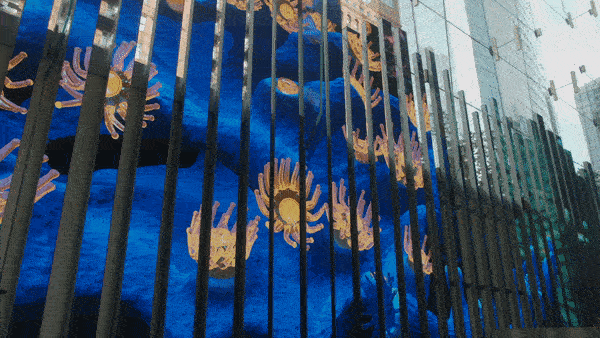Choral by localStyle
August 5th–September 30th 2019
Public Viewing Hours:
Fridays 6–8pm
Saturdays 1–5pm
Sundays 1–5pm
localStyle’s immersive audiovisual installation Choral features coral reefs as the metaphorical ‘voice’ of the Anthropocene, hence the title and the soundtrack’s otherworldly electronic choir. Although their computerized 3D visualization of various corals is initially grounded in scientific research, some of the corals’ behavior reflects their imagination via speculative underwater world-building. The habitats that corals create are fundamental to the sustainability of a quarter of all marine species, but these ecosystems are in crisis. Despite major challenges, there are possibilities for fostering coral regeneration and recovery, thus the reason for guarded optimism. Choral is localStyle’s artistic contribution to a larger-scale human response.
click on the image to watch a short video documentation (with audio) of Choral
Interview with localStyle
Marlena Novak (visual artist) and Jay Alan Yim (composer/sound artist), under the collaborative name localStyle, have been creating work that addresses environmental and socio-political concerns through the use of a wide range of media since 2000, particularly utilizing technological tools in their creative practice. Deep interest in understanding the contemporary conditions of non-humans and humans has led them to focus on themes as varied as the mating behavior of hermaphroditic marine flatworms, the sonification of electric fish from the Amazon, experimental Eurasian blackbird grammar, and the presumptive logic underlying human taxonomic systems. These intermedia works have been presented in festivals, museums, galleries, and alternative venues in more than forty cities worldwide and have entered a number of public collections.
Marlena and Jay, can you talk about your collaborative practice localStyle? And how has it evolved over the years with the variety of different projects and your participation in exhibitions around the globe?
When we started to work together, each of us had already established international solo careers, so we chose to create the localStyle identity to keep the collaborative projects distinct from the expectations that people might have had based on our individual practices. Since then, we have been fortunate to have had opportunities in Asia, Europe and North America to participate in festivals, museums (four of which have collected our work), galleries, alternative spaces, and conferences. Some of our earliest pieces addressed issues of climate change and resource extraction, with projects focusing on non-human others following soon after. Two of our previous large-scale installations centered on animal subjects: scale incorporated twelve species of electric fish from the Amazon river, and Bird explored an experimental computerized song grammar for Eurasian blackbirds in the context of an interactive video installation. Both were presented internationally (Eindhoven & Beijing; New Mexico, Taipei, and Amsterdam); the video installation Naming Things came subsequently and has been shown in Croatia, Wales, Chicago, Copenhagen, and Munich. Naming Things was populated by a menagerie of creatures, both real and fictional; our new piece, Choral, continues to explore aspects of the non-human and their environments.
Marlena, for Choral, I understand that you did a lot of the modeling and texturing in 3D software, which is like sculpting in the digital realm. Can you explain the concept of transferring the “sculptures” you created in 3D space on the computer screen into the large scale, unique sculptural structure of 150 Media Stream?
The distinctive wavelike form of the screen was inviting for imagining the corals’ environment visually, as well as conceptually, in terms of how critical the ‘flow’ of human activities are in their relationship to the larger ecosystem that depends on the health of the reef. Inspired by the hospitality of the corals to create habitats for other creatures, all is modeled in 3D software. Additionally, as these animals themselves are very tiny in comparison to the outsized role they play in the larger ecosystem I wanted to utilize the grand scale of the site-specific screens to celebrate the corals’ importance by modeling them larger than life. I designed the piece to incorporate 150 Media Stream’s physicality to represent various events throughout the narrative: beginning with Choral’s ‘origin myth’ the polyps ascend vertically to the stars, then through the rising curtain that reveals the horizontally moving seabed across the 153 ft. wide array of screens signifying the desire for the reefs’ infinity, followed by the descending tetrapods providing hope for restoration, the penultimate visionary dancing scene where the corals traverse the entirety of the digital surfaces, through the final spawning event where the colonies release gametes that are drawn upwards by underwater currents. Several members of the Choral team—Mak, Nathaniel, Malu, Snow (and Jay)—worked closely with me to envision these ways of responding to the structural form of the 89-blade array. (full credits below)
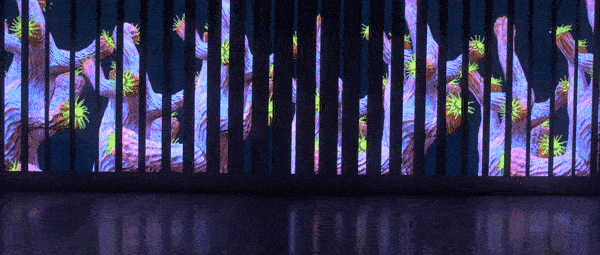
Jay, the concept of the audio track—the voice of the Anthropocene—is very grand in theme and it seems theatrical, almost otherworldly, quite different from the environmental and architectural context of the 150 N Riverside lobby. How did you envision the audio track in interpreting the visuals and its effect on the tenants in a commercial building?
Marlena actually came up with the idea that coral polyps themselves could be the “voice of the Anthropocene” and then suggested the title Choral to reference that. This means that if one treats corals as ‘sentinel species’—whereby a degradation in their health is a sharp warning to humans because they are more sensitive than we are—they are calling for us to act while there is still time. The challenge of living in the Anthropocene is that human adaptability can dull our awareness of threats that increase gradually. Animals have legendary abilities to sense dangers (storms, earthquakes, toxic gases) that people cannot. Marlena’s rephrasing was an update to the notion of “the canary in a coal mine”, which is an early 20th century metaphor referring to observing a caged bird’s health underground as a method of monitoring the air quality of the mine.
Her concept immediately triggered my idea to base the soundtrack on a famous 16th century choral piece, which I would then recompose with many chromatic substitutions to take the harmony from the 1570s to the present day. It also solidified my decision to replace the text in the original motet with wordless, electronically transformed vocal samples. Coral polyps have mouths, but they don’t have larynxes, so I had to imagine what their ‘singing’ might sound like. As a matter of fact, the design features of the architecture—hard acoustically reflective surfaces of stone, glass, and metal in tandem with the high apex of the atrium—create a contemplative resonance in the lobby of 150 N Riverside that I was eager to exploit in terms of sound design. The synergy between the orchestrated timbres in my composition and the reflective acoustics diffuses the audio in a way that makes the ethereal voices, percussive clicks, and swirling arpeggios seem to emanate from everywhere instead of from the individual speakers. With regard to theatricality, I see theater as an opportunity to communicate. My compositional intention is to create an atmosphere of upliftedness; while there are definitely harmonic shadows and tonally darker passages, I’ve tried to support the abstract ‘narrative’ of Choral in a way that reinforces the motivation to build on hope for successful solutions to the coral crisis.
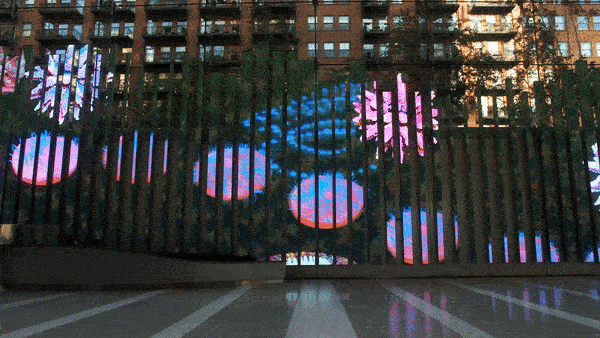
Marlena and Jay, scientific research played an important role in this project. What are some of the most intriguing discoveries about coral species that you have learned during the research process and how have them inspired or influenced the visual and sound design?
We have been the beneficiaries of a wide range of research conducted by dedicated scientists like Luisa Marcelino, Timothy Swain, Ruth Gates, Madeleine van Oppen, Rebecca Albright, Terry Hughes, and many others. We were especially grateful to Marcelino and Swain for sharing a curated reading list with us based on their expertise, and for the opportunity to accompany Tim on one of his ‘backstage’ visits to the Shedd Aquarium where he studies live coral specimens. At the outset, we were aware that coral polyps have a mutualistic, symbiotic relationship with photosynthetic zooxanthellae, and we understood that they were in danger from rising ocean temperatures and acidification as the sea absorbs more and more CO2. Through our reading we came to appreciate that there are a range of added threats: upsetting the balance in the natural competition between macro-algae and coral from a combination of overfishing and pollution from fertilizer runoff, and additional toxic effects from industrial exploitation like mining and oil development (and even some formulations of sunscreen).
There is a very specific example of how our research inspired us to create an extended scene in Choral to signify optimism rather than despair about the current situation. Choosing from a number of different approaches to solving the problems of helping coral reefs regenerate, we were particularly struck by the work that SECORE International is undertaking in collaboration with the Shedd to increase genetic diversity and fostering the odds in favor of coral larvae surviving past their initial stages of vulnerability. When they are big enough to be outplanted these new generations of young corals can help repopulate damaged reefs. One of the more successful designs for an economically scalable substrate for baby corals to grow upon is a grapefruit-sized concrete tetrapod, textured so the larvae can readily attach themselves and start their reef-building. These tetrapods are featured in one sequence of Choral as a symbolic representation of the collective efforts of humans to channel their ingenuity towards finding a solution to the bleaching and reef degradation crisis.
Sonically, we learned that a healthy reef is usually also a noisy reef; percussive electronic clicks similar to actual reef sounds were used in a stylized and rhythmic way to evoke this situation in both the introduction to our piece, and during the fantasy sequence when individual corals have a visionary experience and engage in a choreographed dance.
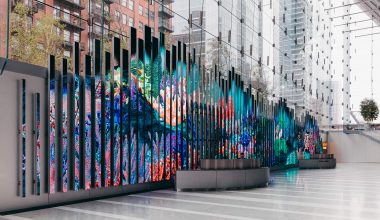
Marlena and Jay, as artists whose work often addresses socio-political concerns, how do you navigate opposing opinions on controversial subjects (such as climate change) in a public venue?
This is an interesting aspect of our artistic practice as throughout history one of the (many) important functions that artists can serve is as cultural barometers. Artistic practices reflect every component of the societies in which they are embedded. We always try to think strategically about how a particular project might make a constructive connection to the likely audience who will encounter the work. In a public space, what we aim to accomplish is to address the audience in such a way as to elicit engagement that can then trigger appreciation, curiosity, and thoughtfulness directed positively towards something that otherwise would not be part of their thoughts in that moment. With Choral we want people to regard corals as beautiful and awe-inspiring, to recognize their charismatic auras as remarkable creatures, and to value them aesthetically. That value is the first step for many towards understanding their value economically; that enhanced comprehension can be the means for people to value corals ecologically and holistically as a critical habitat to 25% of all marine species and appreciate the $30 billion annually and at least 500 million people whose lives depend on restoring the health of corals worldwide. On top of all that, coral reefs are future sources of medicines as anti-cancer, antiviral, and pain management formulations. If our piece can help trigger the kind of affective response that makes passersby start this chain of appreciation and reflectiveness, they may find themselves reading newspaper articles about coral reefs, and watching documentaries about the ocean, and then be positively inclined when legislators are considering steps to protect and regenerate corals. Corals are small and most people give them little notice; the first step for many is to encourage a “wow, those are fascinating!” realization.
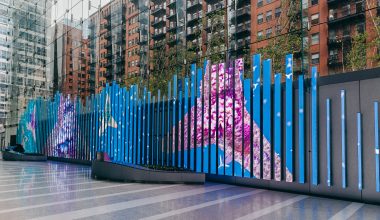
Credits
Marlena Novak: producer and director, 3D visual artist, project manager; 3D modeling and animation, motion graphics conceptual development, main concept developer & research
Jay Alan Yim: co-producer and composer/sound designer; main concept development & research
Mak Hepler-Gonzalez: assistant producer and 3D artist; 3D modeling, polyp animation, rendering manager, 2D and 3D post-production
Nathaniel Gillette: motion graphics coordinator; 3D and 2D artist
Malu Ayers: 3D artist, concept contributor
Snow Xu: project intern; 3D artist
Max Crider: close-up polyp rigging
Sally Jo: preproduction conceptual contributor
Special thanks:
Emily Kuehn: technical assistance
Grant funding support:
Illinois Arts Council (Individual Artists Grant)
School of the Art Institute of Chicago (Faculty Enrichment Grant)
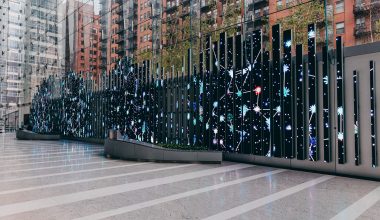
Acknowledgements from the artists:
We wish to express our deep thanks to Luisa Marcelino and Timothy Swain of Marcelino’s Group at Northwestern University. Their multilayered research into how and why different corals have different responses to the stresses that can cause bleaching, and their personal generosity in directing us towards a curated selection from the plethora of extant scientific literature was tremendously informative and helped us gain a better perspective from which we could develop our own project. They were also instrumental in fostering our contact with staff members at the Shedd Aquarium.
Thanks also to Mark Schick, Nicole Minadeo, Rachel LeFevre-Snee, Bridget Kiely, and everyone else at the Shedd who have joined us in making the public aware of this moment when corals need human attention. Their expertise and commitment to understanding and preserving the biosphere that covers 71% of our planet is truly inspirational. Anybody who wants to experience the magical beauty of corals firsthand should see them in person at the Shedd’s Wild Reef exhibit.
Learn more about localStyle here
#StreamOn
info@150mediastream.com

